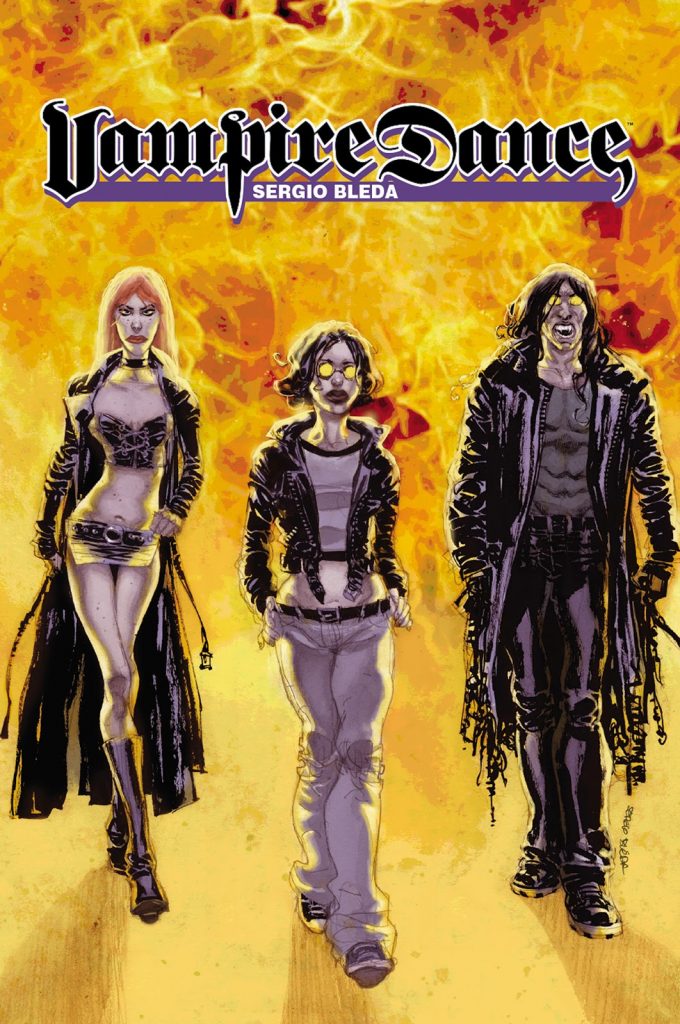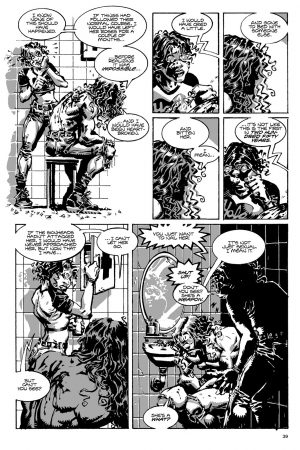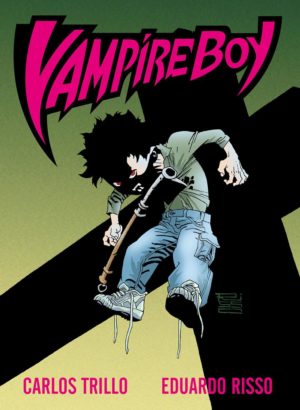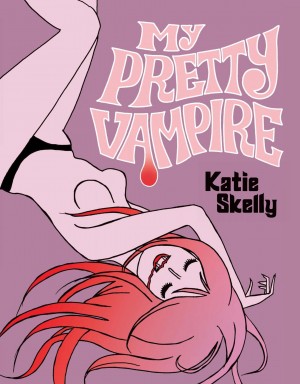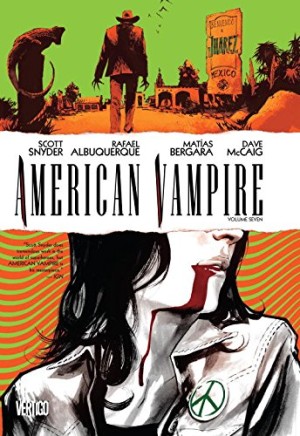Review by Karl Verhoven
An iconic posed and sensationalist cover isn’t entirely unrepresentative, but it makes Sergio Bleda’s vampire story seem as if it’s more generic than the urban thriller it actually is. He delivers modern day vampires living in 1990s Barcelona, the time and place where Bleda created his story, and instead of the rabid blood suckers of most vampire stories, they live largely normal lives, except with limitations. Most of the traditional weaknesses are also discounted while the strengths are retained, although they only go out at night if possible as daylight impairs their vision.
They’re thrust into the public eye when two events converge. Jacob is infatuated with a girl, and rescues her when she’s being beaten up by some Nazi thugs, leaving one dead and the others with life-changing injuries. On the same night Inés meets Ana, confused and sobbing at having become a vampire, and whose picture is plastered all over the city as someone missing. A reported sighting attracts an already alert police.
Stylistically distinctive artwork featuring real city surroundings further distances these vampires from tradition. Bleda uses fish eye perspectives and exaggeration to suggest movement, and instead of the pages just being black and white, Bleda adds grey shades to maximise the gloom. He loves architectural detail, especially of the gothic variety, which results in some rich-looking chapter title spreads. If that’s not already making enough work for himself, he also sets an action scene around Barcelona’s landmark Sagrada Familia cathedral.
With the third chapter Bleda begins to investigate the mythology of vampires, their types, what they’ve done with their prolonged lives, introducing new characters, and because it heads back toward more traditional vampire territory it’s weaker.
“It’s then that I decide to leave Barcelona and never return. Never”, ends Bleda’s original story, but this translation also includes a shorter follow-up produced two years later. That concentrates on Inés, largely in 1994, two years before the previously told events and before she became a vampire. It begins as a strangely touching tale of teenage infatuation, but takes a horrific turn as Bleda reveals how Inés is transformed, taking the down elevator into horror at some speed. This is drawn in more traditional shadow-led black and white, with stark contrasts and confined locations, so beyond Bleda’s natural style, it looks very different.
It’s pleasing to read a vampire story that isn’t entirely swamped in clichés, Bleda’s art is to swoon over, and he hooks readers well. Vampire Dance is a treat.
